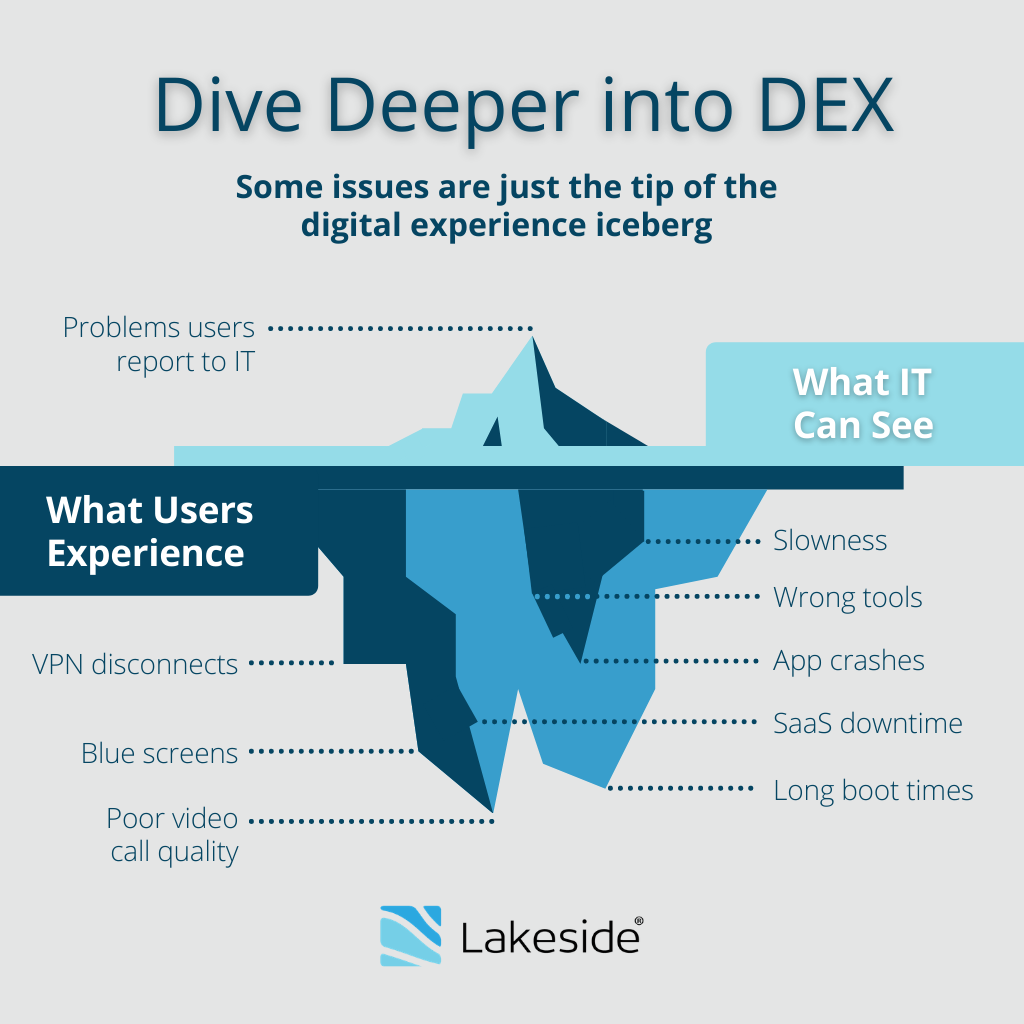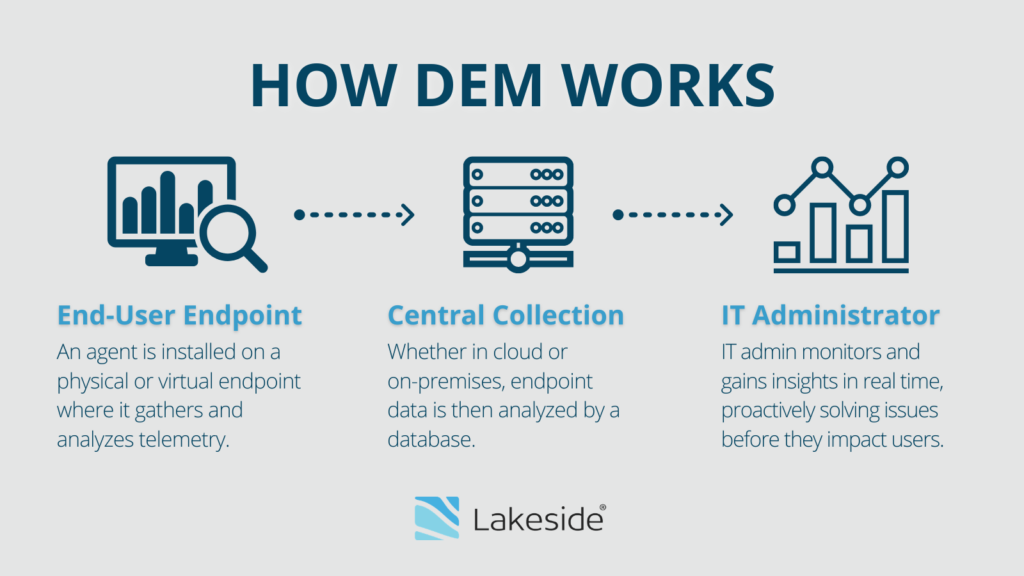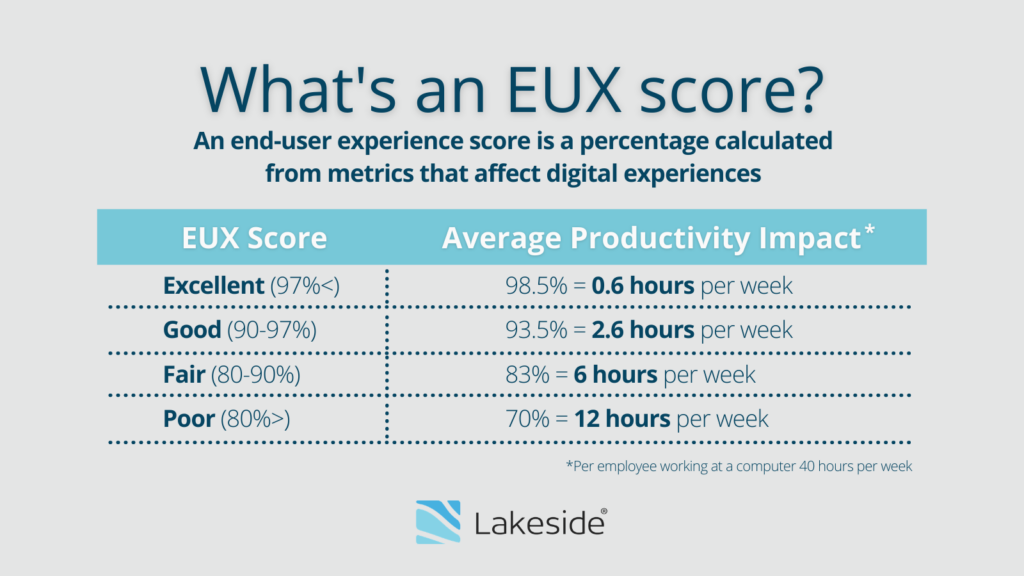
How digital experience management and endpoint data can bridge the gap between what IT can see and what end users experience
This is the first in a three-part series focusing on the core tenets of managing digital employee experience. Also read “Part II: Make IT Proactive” and “Part III: Continually Transform,” and discover even more by visiting our DEX landing page.
Organizations can’t always say for sure if they have a handle on what’s happening across their digital environments or the issues their employees face.
And eventually technology leadership, from CIOs down to IT admins, all find themselves wondering the same thing: What would our end users say about their digital employee experience?
Or rather, what aren’t they saying?
More often than not, IT teams don’t have the visibility they need and end users aren’t always upfront about issues they encounter. That disparity between what IT can see and what end users are experiencing can quickly lead to bigger problems down the line — especially when it comes to support, transformation projects, employee productivity, and even business outcomes (recruiting, retention, innovation, return on investments (ROI), growth, etc.).
So how is this visibility gap impacting organizations and digital employee experience (DEX)? And what can organizations do to bridge the divide between IT and end users?
Let’s take a closer look at IT visibility.
Knowing Is Half the Battle
Say a remote worker is having problems with a crashing app.
Seems harmless at first — just reopen the app, or maybe restart and try again.
The second or third time it happens is a little more annoying. The fourth and fifth instances are completely frustrating. And maybe after the sixth crash, when a lot of that day’s work has just up and disappeared, that remote worker begins to weigh their options:
- Should I bother IT with this?
- How much do I really need to use that app at all?
- Maybe I can download something to fix it? Or find something new to use?
It’s because of cases like this that IT teams need the ability to look across complex digital environments in real time and through historical trends to see what problems are occurring and why. Because by the time this user alerts IT — if they decided to at all — their digital employee experience has already suffered; productivity has been lost dealing with crashes and downtime; and that issue could have snowballed into a much bigger problem that impacts others and requires more time, staff, and resources to solve.
Digital Employee Experience (DEX), also known as end-user experience (EUX), is the quality of users’ interactions with technology in their work environment.
But of course there’s much more going on across the digital environment than just an app crash.
Knowing what’s happening, how it impacts users, and what can be done to solve issues is critical to the operation of any organization. And a better view of the digital infrastructure itself also helps IT track assets — devices, software, cloud services, licenses, etc. — for targeted refreshes, performance monitoring, software rationalization, and other transformation projects that can improve digital experiences as well as business growth.

Now comes the crucial question: How can IT get that kind of visibility, especially when it comes to digital employee experience?
The answer lies in digital experience management.
How Digital Experience Management Improves Visibility
Digital environments never stay the same for long. As technologies evolve, priorities shift, and bring-your-own-device (BYOD) culture expands, the IT estate will always change, grow, and become vastly more complex along with it.
Which makes keeping tabs on everything vastly more difficult, too. And although there are countless tools and solutions out there to help IT departments track bits and pieces of their IT estate, most fall short of providing the breadth and depth of detail needed to see clear across the digital landscape and into end-user experiences.
That’s why the key to a more holistic view of any computing environment starts by looking in the right place with the right kind of solution.
Digital experience management — a process of analyzing usage and performance data across devices, structures, and services to understand the quality of users’ digital experiences — is designed to focus on the most critical part of any digital infrastructure: The endpoint.
By deploying a lightweight agent to both physical and virtual devices, a DEM platform can continuously gather metrics — including device details and user behaviors — to uncover greater insights about digital environments.

For Lakeside Software’s Digital Experience Cloud — a cloud-based platform powered by its DEM solution, SysTrack — this process involves securely capturing more than 10,000 metrics every 15 seconds from the edge, providing IT with both real-time data and historical context to understand:
- Hardware and app performance
- Latency
- CPU, memory, or storage usage
- Network connectivity
- App or system faults
- Slow startups
Any one of these data points alone helps fill in blind spots across the IT estate. But all that combined data, coupled with end-user feedback and sentiment information, gives IT a more complete view of what users are experiencing and all the factors that impact those digital experiences.
All that data, which Lakeside collects across more than a 100 classes of objects, also reveals one of the most important metrics in IT: The end-user experience score.

An EUX score lets IT know at a glance the overall state of an organization’s digital environment and the impact is has on productivity. It can also greatly influence day-to-day operations and even prompt proactive IT support, as well as become a powerful key performance indicator (KPI) in IT initiatives, transformation projects, and business strategies.
E-BOOK
The Digital Experience Guide
7 Qualities of Digital Employee Experience
Making DEM Part of Your DEX Strategy
Better endpoint visibility is one thing. But turning all that data into actions and processes that improve overall digital employee experience? That’s quite another.
Still, the more IT teams can see, the more they can do. And when it comes to a few key use cases, greater IT visibility makes all the difference.
Proactive IT service operations
The old approach to IT support was mainly reactive — wait for a service desk ticket, investigate, and resolve the issue, repeat.
But with more complex digital environments and higher user standards for apps and devices, a reactive response isn’t enough anymore.
Whether it’s a crashing app or cloud service outage, the ability to see issues as they occur — or even before they happen — means quicker remediation and happier employees. Lakeside’s Digital Experience Cloud is able to provide that proactive and predictive approach with insightful analysis of deep telemetry data; artificial intelligence-powered capabilities; and automation that help optimize service desk operations and shift IT closer to “level 0” support.
Persona management
Not all employees work in the same way. They also don’t need/use the same software and hardware, and might not be impacted by the same DEX issues.
To navigate the complexities of a diverse workforce, Lakeside’s digital experience management solution helps IT to segment end users into groups of similar work styles and needs — known as personas — for more custom support service.
By using personas, IT teams can:
- Focus support to users that might be affected by certain updates or changes
- Provide need-based procurement rather than unnecessary large-scale upgrades
- Prioritize software/hardware refreshes for users who need it most
- Rationalize license upgrades or rollbacks depending on usage
Remote work support
For organizations with employees that are partly or fully remote, maintaining a quality digital employee experience outside the office can be especially challenging.
That’s mainly because IT has almost no visibility outside the corporate network, making it nearly impossible to support remote workers that are using home Wi-Fi or unauthorized connected devices.
But just like in the office, Lakeside’s Digital Experience Cloud — with easy scalability and simple third-party integration — provides expanded visibility of all endpoints, no matter where remote workers are located. And IT is able to see outside the corporate network to help identify and resolve issues impacting digital employee experience and productivity.
Because when you ask yourself again “What would end-users say about their digital employee experience?”, the answer shouldn’t be such a mystery. It should be right there for IT to see.
Take a Closer Look at DEM
Explore how digital experience management provides critical IT visibility. Request a custom demo today.
Subscribe to the Lakeside Newsletter
Receive platform tips, release updates, news and more



